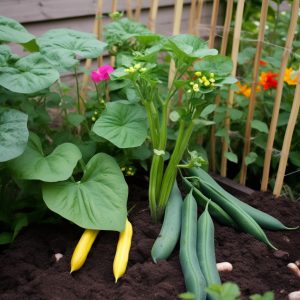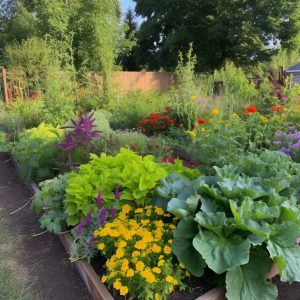Companion planting is an age-old gardening practice that involves growing specific plants together to enhance their growth, productivity, and pest control. By understanding the relationships between plants, you can create a thriving, more productive garden without relying on harmful chemicals. In this ultimate guide to companion planting, we’ll explore the benefits, the best plant combinations, and tips for implementing this practice in your garden.
Benefits of Companion Planting: Companion planting offers several advantages for your garden, including:
a. Pest control: Some plants repel or deter pests, reducing the need for chemical pesticides.
b. Improved pollination: Planting flowers near fruit and vegetable crops can attract pollinators and increase yields.
c. Enhanced soil fertility: Some plants, like legumes, fix nitrogen in the soil, benefiting neighboring plants.
d. Space optimization: Planting tall and short plants together maximizes space and can provide shade for heat-sensitive crops.

Best Companion Plant Combinations: There are countless companion planting combinations, but here are some tried-and-true examples:
a. Tomatoes, Basil, and Marigolds: Basil enhances tomato flavor and deters pests, while marigolds repel nematodes.
b. Beans, Corn, and Squash: Known as the “Three Sisters,” this combination provides mutual support, pest control, and shade.
c. Carrots and Onions: The strong scent of onions masks the carrot aroma, deterring carrot flies.
d. Cabbage and Mint: Mint repels cabbage moths, protecting your cabbage crops.
e. Lettuce and Chives: Chives help deter aphids, protecting delicate lettuce leaves.

Tips for Successful Companion Planting:
a. Research plant relationships: Investigate which plants work well together and which combinations to avoid. Some plants may compete for nutrients, while others may attract pests.
b. Observe your garden: Pay attention to your garden’s microclimates and pests, and adapt your companion planting plan accordingly.
c. Start small: Begin with a few proven companion planting combinations and expand your knowledge and practice over time.
d. Rotate crops: Combine companion planting with crop rotation to further prevent pest and disease problems and maintain soil fertility.

Companion Planting Mistakes to Avoid:
a. Planting two heavy feeders together: Avoid planting two nutrient-demanding plants, like tomatoes and corn, next to each other to prevent competition for resources.
b. Ignoring plant spacing: Proper spacing is crucial for healthy growth; overcrowding can lead to competition for light, water, and nutrients.
c. Focusing solely on companion planting: While it’s an essential tool, don’t rely on companion planting alone for pest control and soil fertility. Combine it with other organic gardening practices for the best results.

Conclusion: Companion planting is a powerful technique to boost your garden’s productivity and overall health. By understanding plant relationships and implementing strategic combinations, you can create a harmonious, thriving garden that benefits from nature’s wisdom. Start experimenting with companion planting and experience the rewards of this time-tested gardening practice.







